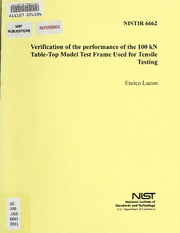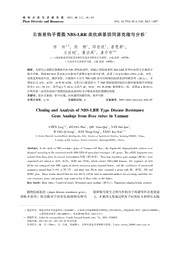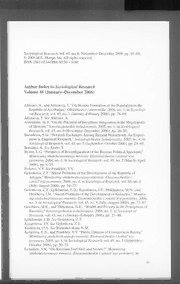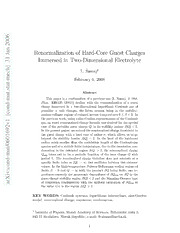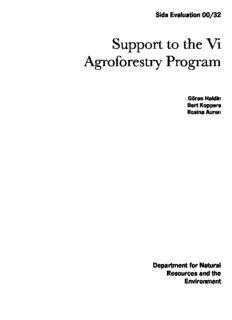
Support to the Vi Agroforestry Program PDF
Preview Support to the Vi Agroforestry Program
7MHE(cid:2))ZEPYEXMSR(cid:2)(cid:20)(cid:20)(cid:19)(cid:23)(cid:22) 6XSSRUW(cid:3)WR(cid:3)WKH(cid:3)9L $JURIRUHVWU\(cid:3)3URJUDP +‚VER(cid:2),EPHMR &IVX(cid:2)/STTIVW 6SWMRE(cid:2)%YVIR (ITEVXQIRX(cid:2)JSV(cid:2)2EXYVEP 6IWSYVGIW(cid:2)ERH(cid:2)XLI )RZMVSRQIRX 6XSSRUW(cid:3)WR(cid:3)WKH(cid:3)9L(cid:3)$JURIRUHVWU\ 3URJUDP *|UDQ(cid:3)+DOGLQ %HUW(cid:3).RSSHUV 5RVLQD(cid:3)$XUHQ 6LGD(cid:3)(YDOXDWLRQ(cid:3)(cid:19)(cid:19)(cid:18)(cid:22)(cid:21) ’HSDUWPHQW(cid:3)IRU(cid:3)1DWXUDO 5HVRXUFHV(cid:3)DQG(cid:3)WKH (QYLURQPHQW 7KLV(cid:3)UHSRUW(cid:3)LV(cid:3)SDUW(cid:3)RI(cid:3)6LGD(cid:3)(YDOXDWLRQ(cid:15)(cid:3)D(cid:3)VHULHV(cid:3)FRPSULVLQJ(cid:3)HYDOXDWLRQV(cid:3)RI(cid:3)6ZHGLVK GHYHORSPHQW(cid:3)DVVLVWDQFH(cid:17)(cid:3)6LGD•V(cid:3)RWKHU(cid:3)VHULHV(cid:3)FRQFHUQHG(cid:3)ZLWK(cid:3)HYDOXDWLRQV(cid:15)(cid:3)6LGD(cid:3)6WXGLHV(cid:3)LQ (YDOXDWLRQ(cid:15)(cid:3)FRQFHUQV(cid:3)PHWKRGRORJLFDOO\(cid:3)RULHQWHG(cid:3)VWXGLHV(cid:3)FRPPLVVLRQHG(cid:3)E\(cid:3)6LGD(cid:17)(cid:3)%RWK VHULHV(cid:3)DUH(cid:3)DGPLQLVWHUHG(cid:3)E\(cid:3)WKH(cid:3)’HSDUWPHQW(cid:3)IRU(cid:3)(YDOXDWLRQ(cid:3)DQG(cid:3),QWHUQDO(cid:3)$XGLW(cid:15)(cid:3)DQ LQGHSHQGHQW(cid:3)GHSDUWPHQW(cid:3)UHSRUWLQJ(cid:3)GLUHFWO\(cid:3)WR(cid:3)6LGD•V(cid:3)%RDUG(cid:3)RI(cid:3)’LUHFWRUV(cid:17) 5HSRUWV(cid:3)PD\(cid:3)EH(cid:3)RUGHUHG(cid:3)IURP(cid:29) ,QIRFHQWHU(cid:15)(cid:3)6LGD 6(cid:16)(cid:20)(cid:19)(cid:24)(cid:3)(cid:21)(cid:24)(cid:3)6WRFNKROP 7HOHSKRQH(cid:29)(cid:3)(cid:11)(cid:14)(cid:23)(cid:25)(cid:12)(cid:3)(cid:11)(cid:19)(cid:12)(cid:27)(cid:3)(cid:26)(cid:28)(cid:24)(cid:3)(cid:21)(cid:22)(cid:3)(cid:23)(cid:23) 7HOHID[(cid:29)(cid:3)(cid:11)(cid:14)(cid:23)(cid:25)(cid:12)(cid:3)(cid:11)(cid:19)(cid:12)(cid:27)(cid:3)(cid:26)(cid:25)(cid:19)(cid:3)(cid:24)(cid:27)(cid:3)(cid:28)(cid:24) ((cid:16)PDLO(cid:29)(cid:3)LQIR#VLGD(cid:17)VH(cid:15) 5HSRUWV(cid:3)DUH(cid:3)DOVR(cid:3)DYDLODEOH(cid:3)WR(cid:3)GRZQORDG(cid:3)DW(cid:29) KWWS(cid:29)(cid:18)(cid:18)ZZZ(cid:17)VLGD(cid:17)VH(cid:18)HYDOXDWLRQ $XWKRUV(cid:29)(cid:3)*|UDQ(cid:3)+DOGLQ(cid:15)(cid:3)%HUW(cid:3).RSSHUV(cid:15)(cid:3)5RVLQD(cid:3)$XUHQ(cid:17) 7KH(cid:3)YLHZV(cid:3)DQG(cid:3)LQWHUSUHWDWLRQV(cid:3)H[SUHVVHG(cid:3)LQ(cid:3)WKLV(cid:3)UHSRUW(cid:3)DUH(cid:3)WKH(cid:3)DXWKRUV(cid:3)DQG(cid:3)GR(cid:3)QRW(cid:3)QHFHVVDULO\(cid:3)UHIOHFW WKRVH(cid:3)RI(cid:3)WKH(cid:3)6ZHGLVK(cid:3),QWHUQDWLRQDO(cid:3)’HYHORSPHQW(cid:3)&RRSHUDWLRQ(cid:3)$JHQF\(cid:15)(cid:3)6LGD(cid:17) 6LGD(cid:3)(YDOXDWLRQ(cid:3)(cid:19)(cid:19)(cid:18)(cid:22)(cid:21) &RPPLVVLRQHG(cid:3)E\(cid:3)6LGD(cid:15)(cid:3)’HSDUWPHQW(cid:3)IRU(cid:3)1DWXUDO(cid:3)5HVRXUFHV(cid:3)DQG(cid:3)WKH(cid:3)(QYLURQPHQW &RS\ULJKW(cid:29)(cid:3)6LGD(cid:3)DQG(cid:3)WKH(cid:3)DXWKRUV 5HJLVWUDWLRQ(cid:3)1R(cid:17)(cid:29)(cid:3)1$785(cid:16)(cid:20)(cid:28)(cid:28)(cid:28)(cid:16)(cid:24)(cid:23)(cid:23)(cid:25) ’DWH(cid:3)RI(cid:3))LQDO(cid:3)5HSRUW(cid:29)(cid:3)2FWREHU(cid:15)(cid:3)(cid:21)(cid:19)(cid:19)(cid:19) 3ULQWHG(cid:3)LQ(cid:3)6WRFNKROP(cid:15)(cid:3)6ZHGHQ(cid:3)(cid:21)(cid:19)(cid:19)(cid:19) ,6%1(cid:3)(cid:28)(cid:20)(cid:16)(cid:24)(cid:27)(cid:25)(cid:16)(cid:27)(cid:27)(cid:26)(cid:23)(cid:16)(cid:28) ,661(cid:3)(cid:20)(cid:23)(cid:19)(cid:20)†(cid:19)(cid:23)(cid:19)(cid:21) 6:(’,6+(cid:3),17(51$7,21$/(cid:3)’(9(/230(17(cid:3)&223(5$7,21(cid:3)$*(1&< $GGUHVV(cid:29)(cid:3)6(cid:16)(cid:20)(cid:19)(cid:24)(cid:3)(cid:21)(cid:24)(cid:3)6WRFNKROP(cid:15)(cid:3)6ZHGHQ(cid:17)(cid:3)2IILFH(cid:29)(cid:3)6YHDYlJHQ(cid:3)(cid:21)(cid:19)(cid:15)(cid:3)6WRFNKROP 7HOHSKRQH(cid:29)(cid:3)(cid:14)(cid:23)(cid:25)(cid:3)(cid:11)(cid:19)(cid:12)(cid:27)(cid:16)(cid:25)(cid:28)(cid:27)(cid:3)(cid:24)(cid:19)(cid:3)(cid:19)(cid:19)(cid:17)(cid:3)7HOHID[(cid:29)(cid:3)(cid:14)(cid:23)(cid:25)(cid:3)(cid:11)(cid:19)(cid:12)(cid:27)(cid:16)(cid:21)(cid:19)(cid:3)(cid:27)(cid:27)(cid:3)(cid:25)(cid:23) 7HOHJUDP(cid:29)(cid:3)VLGD(cid:3)VWRFNKROP(cid:17)(cid:3)3RVWJLUR(cid:29)(cid:3)(cid:20)(cid:3)(cid:24)(cid:25)(cid:3)(cid:22)(cid:23)†(cid:28) ((cid:16)PDLO(cid:29)(cid:3)LQIR#VLGD(cid:17)VH(cid:17)(cid:3)+RPHSDJH(cid:29)(cid:3)KWWS(cid:29)(cid:18)(cid:18)ZZZ(cid:17)VLGD(cid:17)VH Table of Contents 1 Executive Summary ...................................................................................... 1 1.1 Background.......................................................................................................................1 1.2 Main findings of the Assessment Study..........................................................................2 1.3 Main conclusion...............................................................................................................3 1.4 Main Recommendations .................................................................................................3 1.4.1 Technical Approach .........................................................................................................3 1.4.2 Organisation and Administration......................................................................................4 1.4.3 Financing........................................................................................................................4 1.4.4 Timeframe of Projects ....................................................................................................4 1.4.5 Pulling Out and Expansion..............................................................................................4 2 Program Context .......................................................................................... 5 2.1 Development Context......................................................................................................5 2.1.1 Economic and social development......................................................................................5 2.1.2 Natural resources and farming systems..............................................................................6 2.1.3 Lake Victoria Initiative (LVI)..........................................................................................7 2.2 Program History...............................................................................................................8 2.3 Program Description........................................................................................................9 2.3.1 Organisation and administration.......................................................................................9 2.3.2 The structure of the four projects................................................................................... 11 2.3.3 Uganda ....................................................................................................................... 12 2.3.4 Tanzania..................................................................................................................... 12 2.3.5 Kenya.......................................................................................................................... 12 3 Purpose of the Assessment Study ............................................................... 13 3.1 General ...........................................................................................................................13 3.2 Methodology..................................................................................................................13 3.3 Limitations......................................................................................................................14 4 Assessment Issues ...................................................................................... 15 4.1 Relevance of the Program Goal (Development Objective) ........................................15 4.2 Relevance of Program Purpose (Immediate Objectives) ............................................15 4.2.1 Food and Nutritional Security ........................................................................................ 15 4.2.2 Fuelwood..................................................................................................................... 16 4.2.3 Income Generation........................................................................................................ 16 4.3 Program Approach, Strategy and Design .....................................................................17 4.3.1 Why Agroforestry?........................................................................................................ 17 4.3.2 The Targets................................................................................................................. 17 4.3.3 The Technical Package................................................................................................. 17 4.3.4 Is the Technical Package compatible with farmers(cid:146) priorities? .......................................... 18 4.3.5 Are there any risks with the Technical Package?.............................................................. 19 4.3.6 Collaboration ............................................................................................................... 20 4.3.7 Major flaws in Program strategy and design ................................................................... 20 4.3.8 The art of burning grass............................................................................................... 21 4.3.9 Program expansion and Lake Victoria Initiative .............................................................. 21 4.4 Program Impact..............................................................................................................22 4.4.1 Socio-Economic Impact................................................................................................. 22 4.4.2 Environmental Impact .................................................................................................. 25 4.5 Program Performance....................................................................................................27 4.5.1 Training and Extension................................................................................................. 27 4.5.2 Participatory Rural Appraisal (PRA) ............................................................................ 28 4.5.3 Administration............................................................................................................. 29 4.5.4 Monitoring and Evaluation (M&E).............................................................................. 30 4.5.5 Cost-efficiency.............................................................................................................. 31 4.5.6 Efficiency in Comparison to Similar Programs................................................................ 32 4.5.7 Conclusions.................................................................................................................. 33 4.6 Sustainability Issues........................................................................................................33 4.6.1 Policy Framework and Land Tenure............................................................................... 33 4.6.2 Institutionalisation or Privatisation?............................................................................... 34 4.6.3 Local Participation and Ownership ................................................................................ 35 4.6.4 Human Resources Development..................................................................................... 35 4.6.5 Financing..................................................................................................................... 35 4.6.6 Conclusions on Sustainability ........................................................................................ 36 5 Summary of Conclusions............................................................................. 38 6 Recommendations ...................................................................................... 38 6.1 Technical Approach........................................................................................................38 6.2 Timeframe of Projects ...................................................................................................38 6.3 Phasing Out and Expansion..........................................................................................39 6.4 Administration................................................................................................................39 6.5 Budget.............................................................................................................................39 6.6 Training, Monitoring & Evaluation and PRA..............................................................39 6.7 Extension........................................................................................................................39 6.8 Organisation...................................................................................................................39 6.9 Program and Lake Victoria Initiative (LVI)..................................................................39 Appendices 1: Terms of Reference..................................................................................................................40 2: Itinerary.....................................................................................................................................45 3: Persons consulted .....................................................................................................................46 4: Documentation.........................................................................................................................47 5: Vi Agroforestry Program Matrix..............................................................................................48 6: Vi Agroforestry Program Organisation Chart.........................................................................50 7: Vi Agroforestry Project/Masaka/Organisation Chart ...........................................................51 8: Vi Agroforestry Project/Mwanza/Organisation Chart..........................................................52 9: Vi Agroforestry Project/Musoma/Organisation Chart .........................................................53 10: Vi Agroforestry Project/Kitale/Organisation Chart..............................................................54 11: Annual Contributions 1992(cid:150)2001 to Vi-Skogen/Forum Syd ..............................................55 12: List of Members.......................................................................................................................56 13: Insamlingsstiftelsen Vi planterar tr(cid:228)d ......................................................................................57 List of Acronyms ADC Agroforestry Demonstration Centre AIDS Acquired Immuno-Deficiency Syndrome AOC Areas of Concentration CAP Community Action Plan DFO District Forestry Officer EAC East African Community GAP Group Action Plan GDP Gross Domestic Product GEF Global Environment Facility GTZ Gesellschaft f(cid:252)r Technisches Zusammenarbeit ICRAF International Centre for Research in Agroforestry LFA Logical Framework Approach LVI Lake Victoria Initiative M&E Monitoring and Evaluation NAASP National Agricultural Advisory Services Programme NGO Non-Governmental Organisation NORAD Norwegian Agency for Development Co-operation PMA Plan for the Modernisation of Agriculture PRA Participatory Rural Appraisal RELMA Regional Land Management Unit Sida Swedish International Development Cooperation Agency SNV Stichting Nederlande Vrywilligers (Dutch Volunteer Service) 1 Executive Summary 1.1 Background The Foundation Vi Planterar Tr(cid:228)d ((cid:147)We Plant Trees(cid:148)) (cid:147)Vi-Skogen(cid:148), is a major Swedish Non- Governmental Organisation (NGO) with its Head Office in Stockholm. Vi-Skogen has been promoting tree planting and soil conservation activities in the West Pokot District in Kenya since 1983. Three years later the District of Trans Nzoia was added to the project, which currently operates from Kitale. In 1992 Vi-Skogen expanded into Uganda, adding the Masaka and Rakai Districts to its activities. Further expansion took place in 1994 and 1999 when the Musoma and Magu Dis- tricts were added to the Vi-Program on the Tanzanian side of Lake Victoria. There are thus four project areas operating from Masaka, Kitale, Musoma and Mwanza. Sesbania and maize intercropping In the mid-1990s the approach of the Vi- Program underwent a radical transformation. Consequently, by 1997/98 the Vi-Program abandoned its tree planting strategy based on tree seedling distribution from central nurseries and embarked on the promotion of a wider range of agroforestry techniques to small-scale farmers supported by intensive extension activities. Presently the Vi-Program covers a total of 8 Districts, about 100 000 households and employs about 410 field extensionists. The activities of the Vi-Program are financed by a combination of gifts, grants and donations (about SEK 9 million p.a) and grants provided by Sida (SEK 15 million p.a through Forum Syd), NORAD (about SEK 4 million p.a) and the Norwegian Cooperative Union (SEK 1 million p.a.). In 1999 the total costs were about SEK 30 million, out of which about SEK 20 million were costs directly related to the Vi-Program, excluding the costs for Swedish personnel. The Sida contribu- tion has increased from SEK 8 million in 1992 to SEK 15 million in 1999. In 1998 Sida and the East African Cooperation (EAC) initiated a process which aims to address the poverty and environmental problems in the Lake Victoria Basin in a coordinated manner. The process has been named the Lake Victoria Initiative (LVI). NORAD also supports LVI. Recognising the Vi-Program as a potential instrument for tackling the problems in the Lake Victo- ria Basin, Sida required an assessment of the relevance and capacity of the Program, especially with a view to a possible expansion of the Program within the Lake Victoria Initiative. LTS International was contracted to carry out the assessment. An international three-member Team visited Sweden, Uganda, Tanzania and Kenya during four weeks in August/September 2000 to study the Program. The assessment focuses on the period after the shift in approach in 1997/98 SUPPORT TO THE ”WE PLANT TREES” FOUNDATION – SIDA EVALUATION 00/32 1 1.2 Main findings of the Assessment Study During its 17-year life span the Vi-Agroforestry Program has evolved from a minor and idealistic tree planting operation to a large-scale, professionally managed agroforestry program. All four projects are currently staffed with experienced managers as well as qualified, motivated and reason- ably trained local personnel. The projects are managed, to some degree, in a company-like spirit. The performance of the staff is monitored regularly and bad performers are replaced. • With a view to improving cost efficiency and local participation the Assessment Team does not fully endorse the practice of having two expatriates in each and every project. The Team was impressed by the methodologies and organisational structures developed within the Program. The practice of dividing the project area into Zones, Areas of Concentration (AOC) and Farmer Groups with Zonal Managers supervising the extensionists enhances an efficient penetration of the agroforestry messages to the Farmer Groups. As an exception, the Mwanza project follows the existing governmental administrative levels. The Team estimated that with the present organisational set up the Program has the capacity to deal with an absolute maximum of 150 extension workers per project. Based on this capacity limit the projects in Masaka, Musoma and Kitale still have the potential to gradually increase their extension capacity by about 30%, while Mwanza can double its capacity during the next three years. The introduction of Participatory Rural Appraisal (PRA), Monitoring and Evaluation (M&E), the Logical Framework Approach (LFA), up to date budget procedures, auditing and an improved reporting system has considerably improved the Program(cid:146)s potential to achieve its objectives. The Program is, however, still in the process of developing and streamlining its methodologies, organi- sation and administrative procedures. The Team noticed that some of the projects have a tendency to inflate their organisation by creating too many specialised Units. Furthermore, there are signs that some Units tend to unnecessarily demarcate and build their own small (cid:147)empires(cid:148) within the main organisation. This is particularly the case of the M&E activities, which in most of the projects have developed into unnecessarily heavy and complicated exercises. • According to the Assessment Team the M&E as well as PRA activities need to be refined to become more relevant and cost-efficient. Compared to most bilateral projects the Vi-projects are allowed a high degree of flexibility with regard to the use of the budget and the implementation of the projects. Forming partnerships with other aid organisations and Government institutions is made easy. An excellent example of Vi- cooperation is the joint effort in the Sigor Zone of West Pokot, where the Dutch volunteer organi- sation SNV finances and implements its Natural Resource Management Project through Vi. A similar arrangement is under development between Vi and GEF in Masaka. • Joint training with Government officers and coordinated action in the field is widely practised by all Vi-projects. The overall cooperation with Government authorities is excellent. Flexibility in implementation is a noteworthy strength of the Program. On the other hand, flexibili- ty without proper control and co-ordination may also invite double efforts and unnecessary mis- takes. The Regional Co-ordinator plays an increasingly important role in keeping the various projects on the right track. 2 SUPPORT TO THE ”WE PLANT TREES” FOUNDATION – SIDA EVALUATION 00/32
Description:The list of books you might like

Can’t Hurt Me: Master Your Mind and Defy the Odds

Corrupt (Devil's Night #1)

A Thousand Boy Kisses

Rich Dad Poor Dad
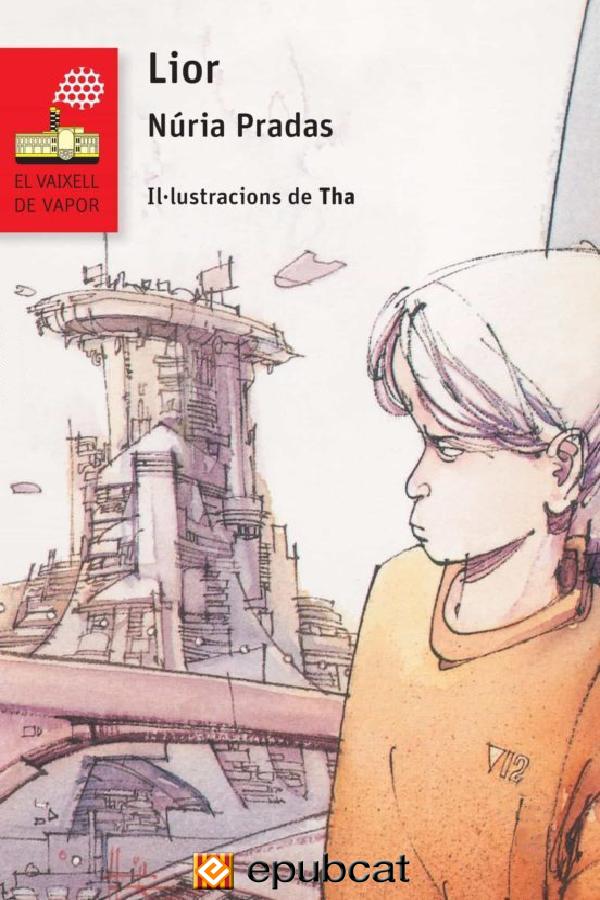
Lior
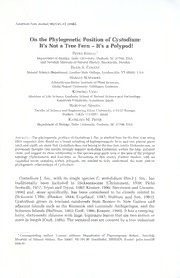
On the Phylogenetic Position of Cystodium: It's Not a Tree Fern – It's a Polypod!
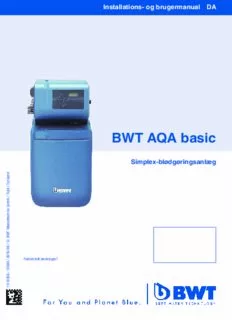
BWT AQA basic

Phylogenetic, habitat, and behavioural aspects of possum behaviour in European lepidoptera

Prairie Schooner 2006: Vol 80 Index

Tell Me to Stay - Charlotte Byrd
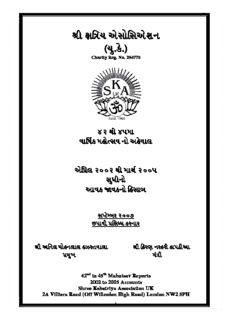
42-45 Mahotsav Reports
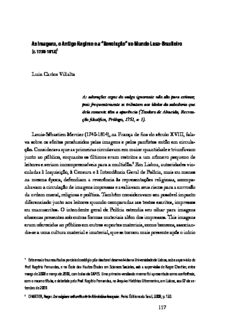
As imagens, o Antigo Regime e a “Revolução” no Mundo Luso-Brasileiro

Warum Manner nicht zuhoren und Frauen schlecht einparken

Byrd v. Aaron's, Inc.

Life and Adventures of Peter Wilkins Vol I by Robert Paltock of Clements Inn

Learning by Test-infecting Symmetric Ciphers
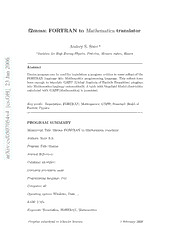
f2mma: FORTRAN to Mathematica translator

Comments on Beckmann's Uniform Reducts

